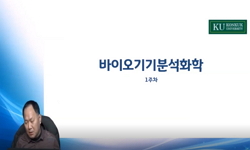우리나라에서 발생하고 있는 급성 출혈성 질환인 신증후출혈열의 원인 바이러스는 Family Bunyaviridae의 Genus Hantavirus에 속하는 한탄과 서울바이러스에 의하여 발생되고 있다. 본연구에서는 신...
http://chineseinput.net/에서 pinyin(병음)방식으로 중국어를 변환할 수 있습니다.
변환된 중국어를 복사하여 사용하시면 됩니다.
- 中文 을 입력하시려면 zhongwen을 입력하시고 space를누르시면됩니다.
- 北京 을 입력하시려면 beijing을 입력하시고 space를 누르시면 됩니다.

신증후출혈열 환자의 혈청학적 및 분자생물학적 진단 검사법 비교 = Comparative Diagnostic Studies on Serologic and Molecular Biological Tests Against Haemorrhagic Fever with Renal Syndrome
한글로보기https://www.riss.kr/link?id=A3010603
- 저자
- 발행기관
- 학술지명
- 권호사항
-
발행연도
2000
-
작성언어
Korean
- 주제어
-
KDC
510.5
-
등재정보
KCI등재
-
자료형태
학술저널
-
수록면
141-149(9쪽)
- 제공처
- 소장기관
-
0
상세조회 -
0
다운로드
부가정보
국문 초록 (Abstract)
우리나라에서 발생하고 있는 급성 출혈성 질환인 신증후출혈열의 원인 바이러스는 Family Bunyaviridae의 Genus Hantavirus에 속하는 한탄과 서울바이러스에 의하여 발생되고 있다. 본연구에서는 신증후출혈열로 의뢰된 환자에서 한탄바이러스에 대한 항체가를 간접면역형광항체법(indirect immunofluorescent antibody technique, IFAT), 면역효소측정법(enzyme-linked immunosorbent assay, ELISA) (IgG, IgM), 고비중입자응집반응(high density composite particle agglutination, HDPA) 및 플라크감소중화시험(plaque reduction neutrafization test, PRNT)등으로 비교 측정하였고, 신증후출혈열환자로 확진된 15명의 한타바이러스 혈청형을 PRNT와 혈청형 특이 역전사 효소 중합효소연쇄반응(nested reverse transcriptase polymerase chain reaction, nested RT-PCR)으로 확인하였다. 신증후출혈열로 의뢰된 환자에서의 한탄바이러스에 대한 IFAT, ELISA(IgG,IgM),HDPA 그리고 PRNT 비교에서 형광항체, ELISA IgG, 응집항체 및 중화항체는 8명 모두 높게 나타났으며, ELISA IgM은 5명에서는 현저히 높은 항체를 보유하고 있었다. 신증후출혈열 환자 15명에서는 높은 형광항체와 중화항체 역가를 나타내었고, 15명 중 12명은 한탄바이러스, 2명은 서울바이러스에 대한 높은 중화항체를 갖고 있었으며, 1명은 두 바이러스에 대하여 동일한 항체 역가를 나타내었으며, 혈청형 특이 primer를 사용한 nested RT-PCR에서는 15명 중 3명과 1명만이 한탄바이러스와 서울바이러스 primer에 대해 RNA가 검출되었다.
다국어 초록 (Multilingual Abstract)
The etiologic agents of haemorrhagic fever with renal syndrome(HFRS) in Korea are Hantaan and Seoul virus in the genus Hantavirus, family Bunyaviridae. Antibody titers of sera from HFRS patients against Hantaan virus were measured by immunofluorescent...
The etiologic agents of haemorrhagic fever with renal syndrome(HFRS) in Korea are Hantaan and Seoul virus in the genus Hantavirus, family Bunyaviridae. Antibody titers of sera from HFRS patients against Hantaan virus were measured by immunofluorescent antibody technique(IFAT), enzyme-linked immunosorbent assay (ELISA), high density composite particle agglutination (HDPA) and plaque reduction neutralization test (PRNT). PRNT and nested reverse transcriptase polymerase chain reaction (nested RT-PCR) was used for serotypic differentiation of Hantaviruses against Hantaan and Seoul virus. Eight doubtful HFRS patients showed higher fluorescent, IgG ELISA, agglutination and neutralizing antibody titer by IFAT, ELISA IgG, HDPA and PRNT, respectively. Five out of them showed high IgM antibody titer by IgM capture ELISA against Hantaan virus, remarkably. Fifteen HFRS patients showed higher fluorescent antibody titer by IFAT. In PRNT, 12 out of them showed high neutralizing antibody titer aginst HTNV, 2 against SEOV and 1 against both viruses. In nested RT-PCR using serotype specific-primer, 3 out of them showed positive against HTNV and 1 against SEOV.
목차 (Table of Contents)
- 서론
- 재료 및 방법
- 1.혈청
- 2.간접면역형광항체법(IFAT)
- 3.효소면역측정법(ELISA)
- 서론
- 재료 및 방법
- 1.혈청
- 2.간접면역형광항체법(IFAT)
- 3.효소면역측정법(ELISA)
- 4.고비중입자응집반응(HDPA)
- 5.플라크감소중화시험(PRNT)
- 6.중합효소연쇄반응(PCR)
- 7.혈청형 특이 역전사 효소 중합효소연쇄반응(nested RT-PCR)
- 8.전기영동
- 결과
- 1.신증후출혈열의 혈청학적 검사 성적비교
- 2.신증후출혈열 환자에서 형광항체가와 중화항체가의 비교
- 3.중화항체와 nested RT_PCR에 의한 혈청형분석
- 고찰
동일학술지(권/호) 다른 논문
-
- 대한의생명과학회
- Joo, Eun-Young
- 2000
- KCI등재
-
Detection of Serum IgA and IgE Antibodies in Experimental Animals Infected with Echinostoma hortense
- 대한의생명과학회
- Ryang, Yong-Suk
- 2000
- KCI등재
-
랫드에 있어서 Bromobenzene의 격일 투여 시, 매일 투여한 경우와 간손상 정도의 비교
- 대한의생명과학회
- 이상희
- 2000
- KCI등재
-
간접흡연으로 인힌 흰쥐 호흡기점막의 변화에 대한 전자현미경적 연구
- 대한의생명과학회
- 구본철
- 2000
- KCI등재




 RISS
RISS



